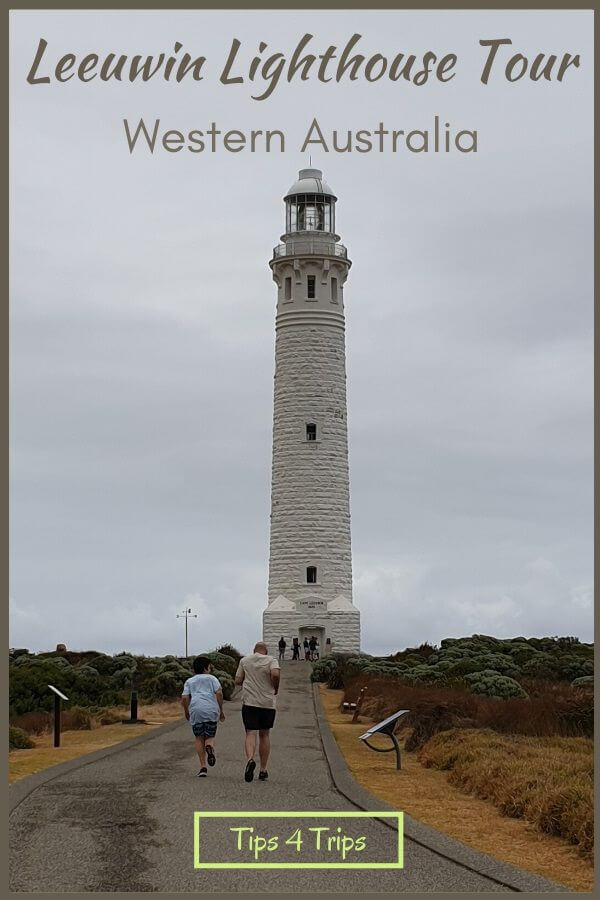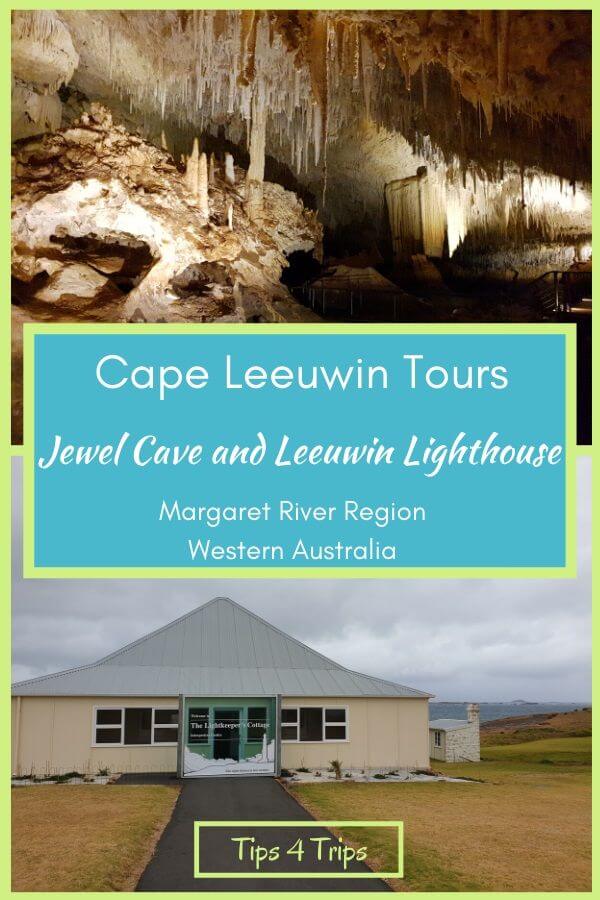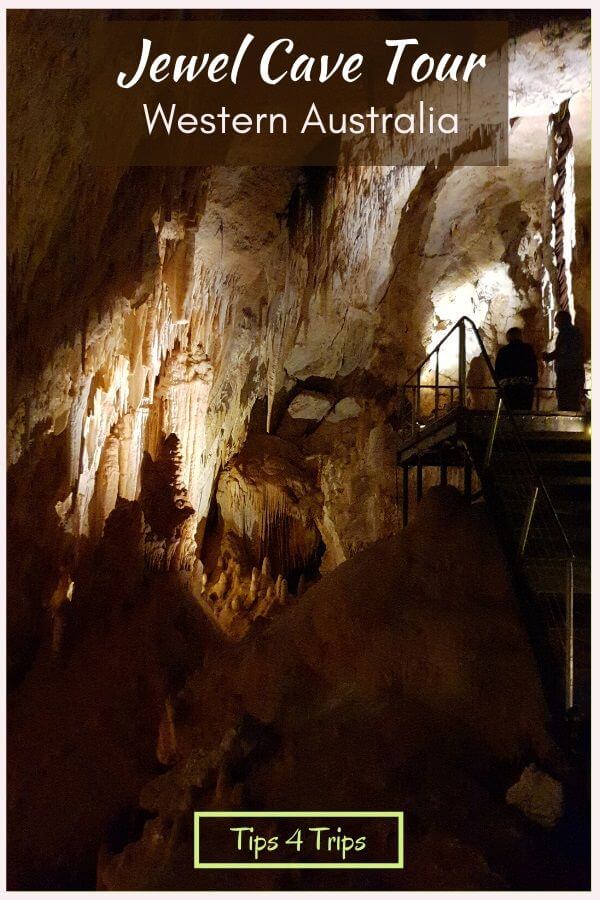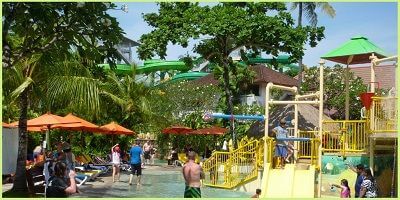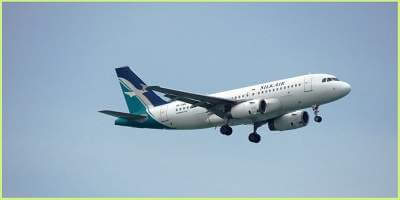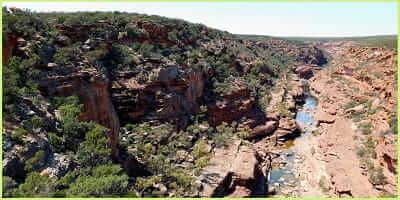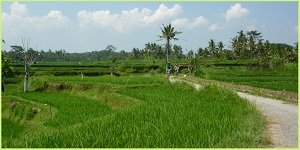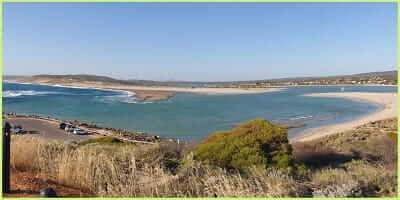Plan Your Cape Leeuwin Lighthouse and Jewel Cave Tour, Western Australia
On a cold January summer’s day we drive 45 minutes south of Margaret River to the small windswept coastal town of Augusta in South Western Australia. Admiring the town’s stunning views over the Southern Ocean we continue on further south for five minutes into the Leeuwin-Naturaliste National Park.
Right on the southwesterly coastal tip where the Southern Ocean meets the Indian Ocean stands the historic Cape Leeuwin Lighthouse. This is where we begin our day trip exploring the lighthouse and then continue on to take a Jewel Cave tour. Not everything goes quite to plan with a few rookie mistakes that we could have easily avoided had we just known.
Read on for our Jewel Cave reviews, discover facts about Leeuwin Lighthouse and gain helpful travel tips to plan your road trip to South Western Australia and avoid those newcomer mistakes.
In this Article You will Learn About:
- The Leeuwin Lighthouse and Jewel Cave tour alternatives
- All about Cape Leeuwin Lighthouse
- What you see during a Jewel Cave tour
- Travel tips and facts exploring this region
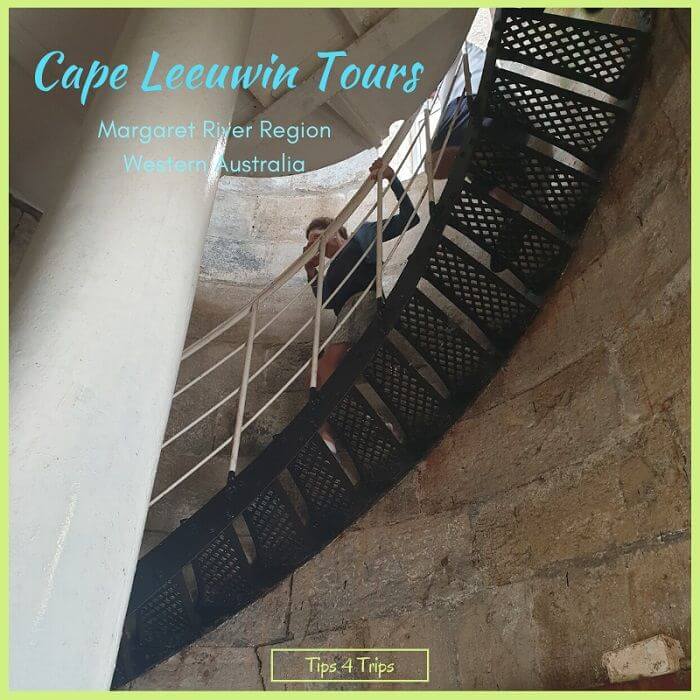
Please share this with them
This post by Tips 4 Trips contains affiliate links*. This means I may receive a small commission if you click on these links. Learn more at the bottom of this post.
Tour Alternatives
There are a total of two lighthouses (Cape Leeuwin and Naturaliste) and six caves (Jewel, Lake, Mammoth, Giants, Calgardup and Ngilgi) in the Margaret River Region.
You can see each of these attractions individually or you can visit them as part of various combo tours. When we visit we chose to do the Cape Leeuwin Lighthouse and Jewel Cave as a combo tour. However, this combo is no longer available – but that won’t stop you from seeing each of these attractions individually which is well worth doing as the two attractions are located only a 20-minute drive apart.
Cape Leeuwin Lighthouse
The cold wind that whips off the seas is a force to be reckoned with as we dash into one of the old buildings now used to house the café, souvenir shop and ticket counter. Two volunteer elderly gentlemen greet us with a smile and help us navigate our purchases for our preferred tour option. They are really helpful, ensuring that we will have enough time between the two tours before advising us to wait near the door for our tour to start.
We meander about the small souvenir shop for about 20 minutes and unfortunately, it is not until our wait time is almost over that we discover we are required to walk to the far end of the peninsular to start the lighthouse tour – meaning we could have spent that time at the Interpretation Centre.
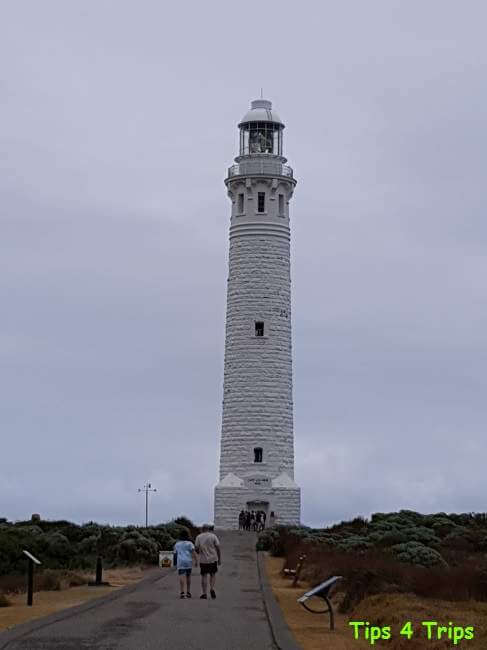
But all is not lost as we enter the white limestone-clad lighthouse and are welcomed by a wonderful tour guide who provides so many interesting Cape Leeuwin Lighthouse facts as we climb bit by bit up the 176 steps to the top.
The Cape Leeuwin Lighthouse’s history dates back to 1895 when it was built. But this lighthouse that stands on the most south-westerly tip of Australia isn’t the lighthouse that was originally sent from England. The first “flatpack style” internal lighthouse fit-out that was shipped out to Australia from Chains in London never reached our shores. And so another was sent and it is those ornate iron staircases and platforms that we climb today.
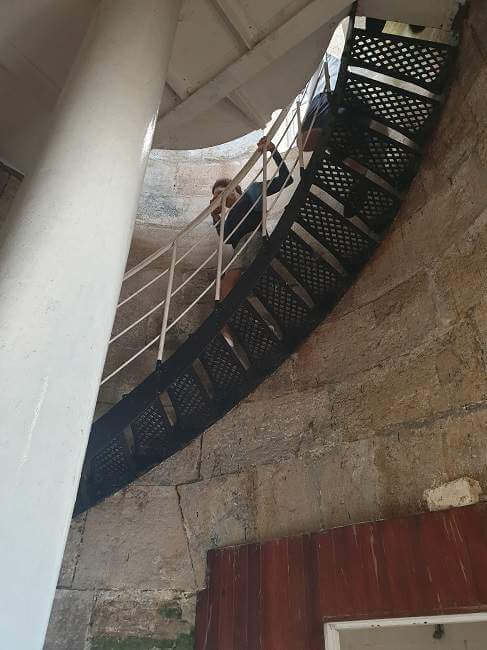
As we stop on each platform to catch our breath the tour guide continues with a bit more information. It wasn’t until the 1980’s that the lighthouse was automated and run by electricity. Prior to this, it was a manual 24-hour, seven-days-a-week operation run by three lighthouse keepers who all lived in their own cottages on site. Part of the lighthouse keeper’s duties included manually pulling the two weighted chains to the top and carrying 70 litres of kerosene to the top of the 39m lighthouse. In the 1970’s, the lighthouse keepers became a bit cheeky by getting the tourists to carry half a litre of kerosene each up the tower.
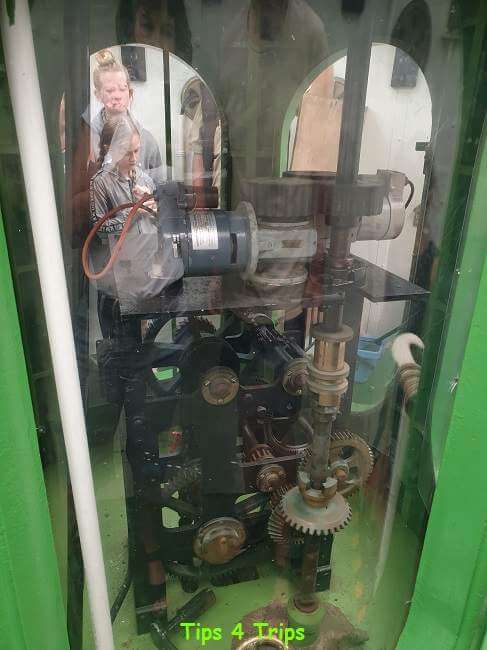
Reaching the top we finally get to see the lighthouse machinery and step out on the circular balcony that offers stunning views of where the two oceans (Indian and Great Southern) meet. It is windy out there; if you are less than 30kg you are told to hold on tight to the railing. I’m a “tad” over that in weight and I too am blown along for a moment. By the way, it is really cold out there and we had forgotten to take jumpers with us.
Top Trip Tip: Take a jumper or sweater with you
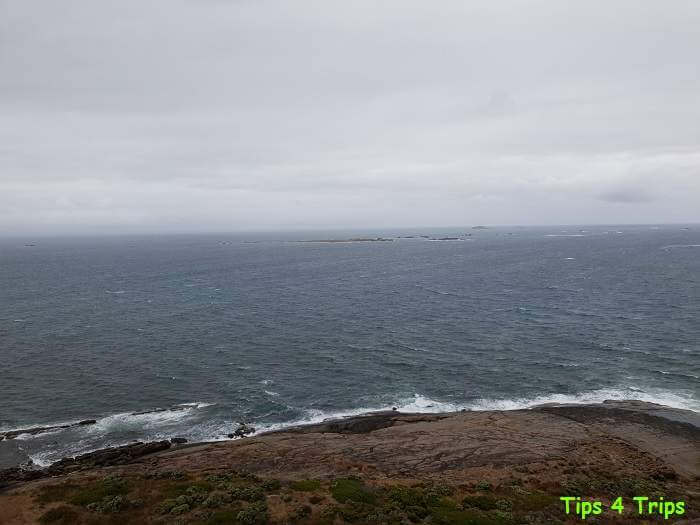
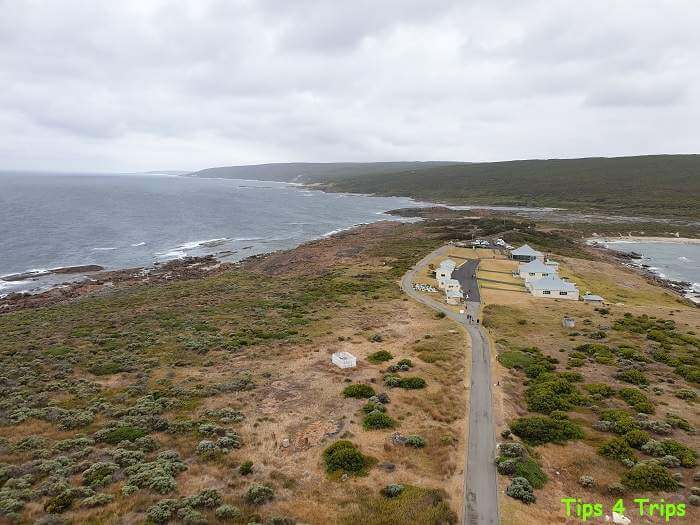
Then it’s back inside to carefully make our way to the ground where we are then left to explore the rest of the grounds at our own pace.
The Lightkeeper’s Cottage Interpretation Centre recently opened the month before in December 2019. The cottage shows stories of various lighthouse keepers who have lived on-site along with interactive displays that the kids will love about the lighthouse equipment like using Morse Code, the lighthouse lamp and all its beautiful glass facets, plus artefacts and films.
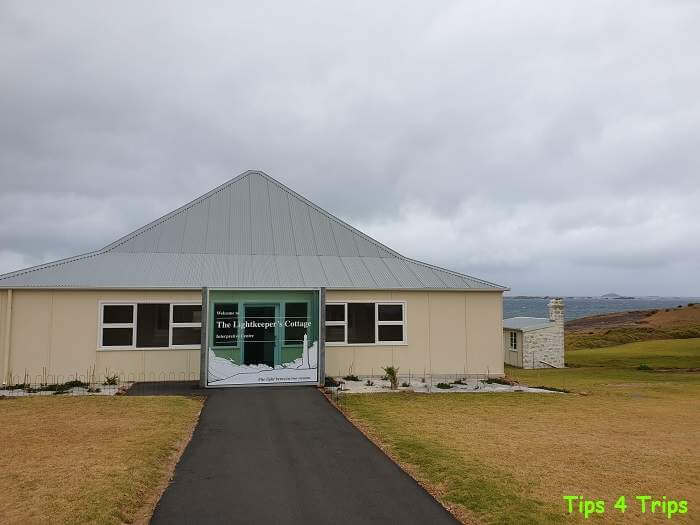
I could have spent far longer reading and trying out all the interesting interactive displays, but alas we have another tour to attend.
Top Trip Tip: If you arrive early you can spend your waiting time exploring the lighthouse grounds and the Interpretation Centre.
Jewel Cave
We enter the new Jewel Cave Preservation Centre situated a short distance from the cave opening. It has been environmentally designed to be self-sufficient with water by collecting the rainwater, filtering it for drinking, washing, and use in the toilets before being treated and pumped back into the ground. I learn all about this as we wait for our tour to begin.
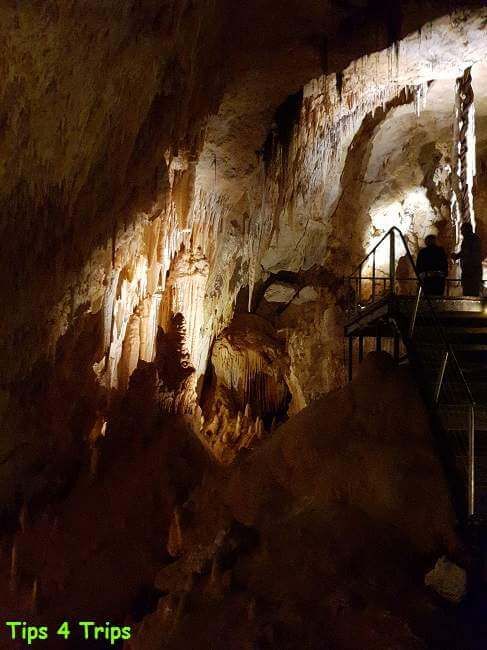
Then it’s time to start our descent into the largest tourist cave in Western Australia. Overall we will climb down a total of 250 wooded stairs (and back up again), across suspended timber and steel walkways and stop at several large viewing platforms.
Top Trip Tip: Wear sensible walking shoes
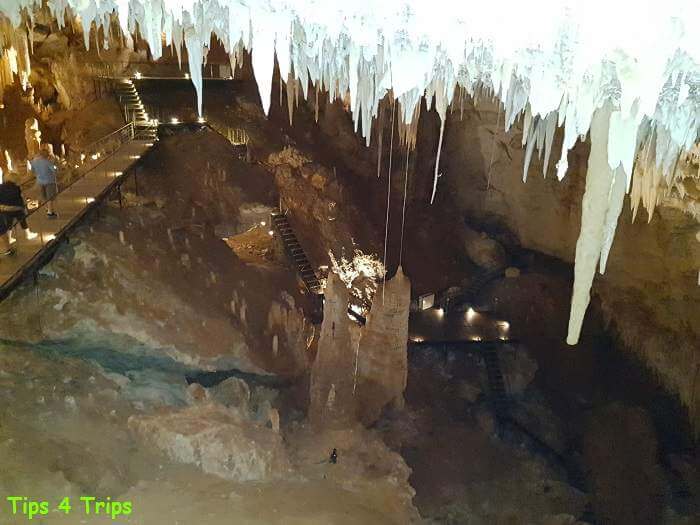
At our first stop in the first of three massive chambers, the large Marri and Karri tree trunk roots are pointed out to us as we learn a little about the history of Jewel Cave. It is the death of one of these trees and the subsequent decay of the tree root that created the opening to the cave and why it was so hard to find.
During the late 1800’s European settlers heard stories about a cave in the Cape Leeuwin region but it was not discovered until the 1950’s when Cliff Spackman came across a small hole in the ground that was blowing out cold drafts of air. In 1957 Cliff Spackman was lowered 12m through the soil to the cave ceiling and then another 8m down to the chamber floor. A year later he went back down again with Lloyd Robinson and Lex Bastian; they explored 12km of cave passages, going to depths of 42m some of which were flooded with lakes that they used an inflatable boat to move about.
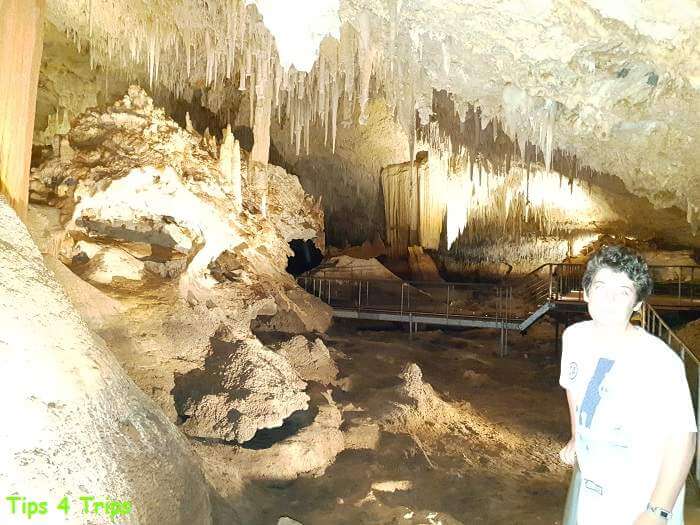
Today though the cave is dry. It could be argued that global environmental impact is the reason, or perhaps it was that the original ticket booth was situated over the top of the cave, or perhaps that burn-offs in the forest above have ceased and therefore the water cannot seep through the forest floor foliage or perhaps it is just the world’s natural climate changes as there is evidence that the cave has been dry before. Lots of questions but no answers.
What we do know is that this cave is beautiful. With lots of stalactites, stalagmites, straws (hollow stalactites) shawls and pendulums. Some are so ornate that the cave formations have been given their own names like the Pipe Organ and the Frozen Waterfall.
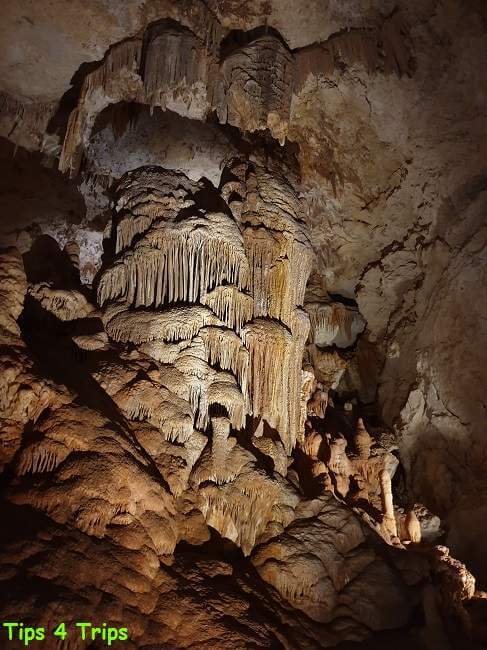
Lighting is used to showcase the cave formations with different coloured lights. An infrared beam to show the height that the water was in during Spackman’s expedition. And then the lights are turned off to experience what it was like for the exploration team and any animals that became trapped in the cave.
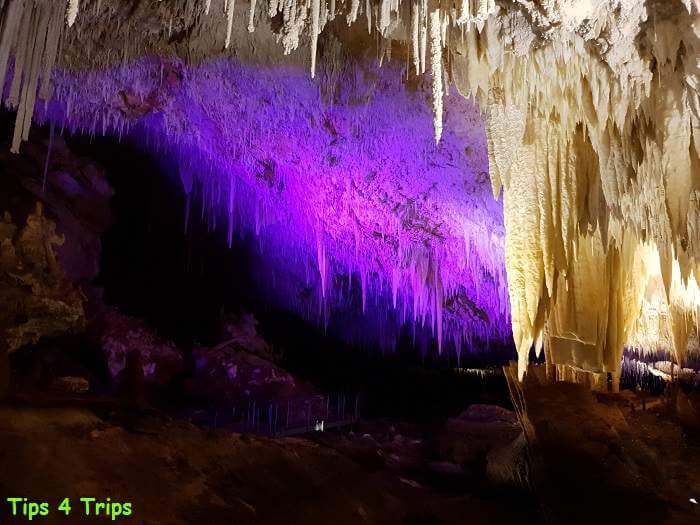
Strolling, ducking and shimmying our way along the sometimes narrow and low walkways we see evidence of just how old this cave is with skeletons and impressions left by extinct animals including the Tasmanian Tiger and the Long Nose Kangaroo. They’ve determined the cave is over one million years old.
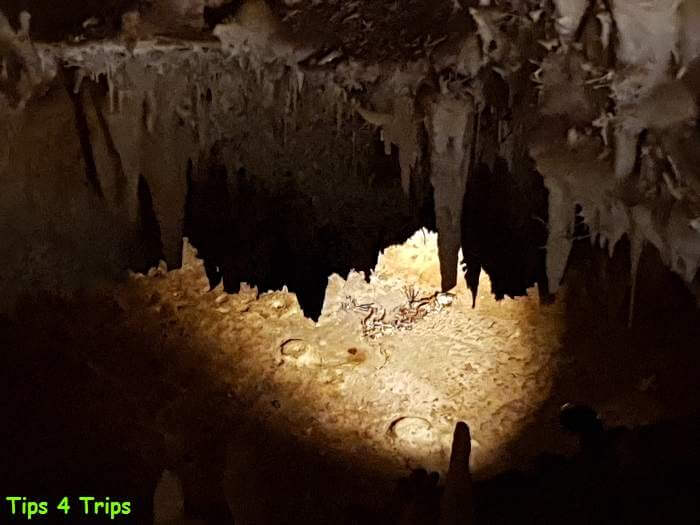
Top Trip Tip: Utilise your waiting time before the tour starts to read all the display boards and learn about the changing environmental impacts on the cave.
Plan Your Visit to Cape Leeuwin Lighthouse and Jewel Cave
Location
Cape Leeuwin Lighthouse is situated 9km further on from Augusta, 315km from Perth. Jewel Cave is 17km away from Leeuwin Lighthouse and 44km from Margaret River. There is no public transport in the region and so you will need to hire a car* (don’t forget to hire car seats for young kids) or book a tour if you don’t have your own car to see these attractions.
Opening Times
Tours at both the cave and lighthouse run throughout the day:
- Jewel cave opens at 9am and tours start on the half-hour every hour with the last tour of the day being 3:30pm
- Cape Leeuwin Lighthouse tours start at 9am and are every half an hour until 4:30pm
Costs
We chose to start at the lighthouse and then visit the cave. But you can do the tour in reverse or just one of the tours without the other or if you’re a lighthouse lover visit the Cape Naturaliste Lighthouse as well.
- Do the tours individually:
- Lighthouse $21/adult and $10/child
- Children under 4 years are not permitted on the tour
- Cave $24/adult and $12/child
- Lighthouse $21/adult and $10/child
Parking
There are large free car parks at both attractions.
What to Take
When planning for your day trip to the Augusta region wear sensible walking shoes as there will be LOTS of steps to climb and don’t forget to include in your day trip bag:
- Jumper/sweater – it gets cold
- Camera
- Money
- Water
- Picnic lunch – to save money
- There is a very popular overcrowded bakery that sells hot food and sweets but not much fresh bread
- The IGA supermarket in Augusta sells fresh bread, rolls and fillings
- There are cafes at both attractions
- But there are no picnic grounds at either attraction
Accessibility
As mentioned there are lots and lots of steps. These are not tours for those with wheelchairs or prams. Children under four years are not permitted to do the lighthouse tour.
Carbon dioxide levels are slightly higher at the bottom of the cave so some people may be laboured with breathing as they ascend back out of the cave. Remember there are 250 steps to climb down and back up, and there are plenty of stops along the tour but be mindful that you need to have a reasonable level of fitness to complete the tour.
Additional Information
During this recent trip to the South West Australia, we stayed at the Riverview Tourist Park in Margaret River.
As we live in Western Australia we love going down south and exploring the rest of Western Australia. Read more about the trips we’ve taken and things to do in Western Australia HERE.
For official websites about these locations check out these sites:
- Cape Leeuwin Lighthouse history and facts
- Leeuwin-Naturaliste National Park
- Jewel Cave
- Cape Leeuwin Lighthouse
⇓ PIN THIS ⇓
DISCLOSURE:
- We paid our own costs.
- Learn how we save for travel
- As an Amazon Associate, I earn from qualifying purchases
- Additional Affiliate links* with Rental Cars* and Hire for Baby* and GetYourGuide* and Viator*
- This means I may receive a small commission if you make a purchase using this link, however it does not cost you any extra to purchase through these links.
- For more information please visit my Disclaimer Page and Privacy Policy.



